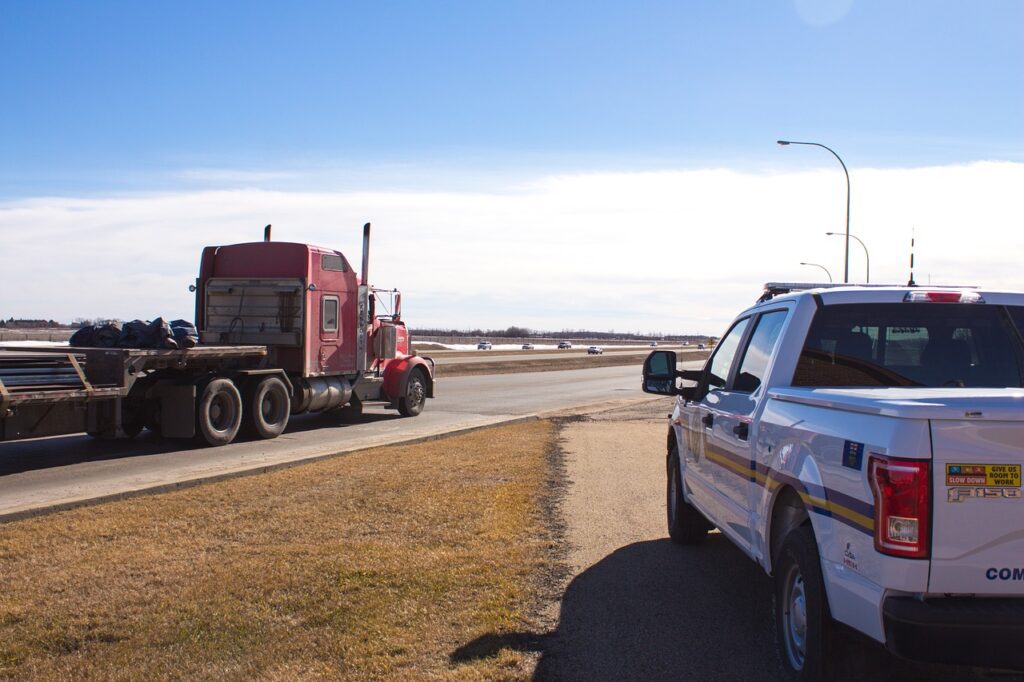
Why Are Trucks Limited To 80000 lbs
When you think of trucks, you may think of them as being able to haul large amounts of weight and why are trucks limited to 80000 lbs.
There are laws in place that limit the amount of weight a commercial truck can carry, and these limits vary from state to state.
Let’s take a look at why these regulations exist, and why are trucks limited to 80000 lbs.
The answer is actually quite simple: federal laws limit the maximum weight of a truck and trailer combination to 80,000 lbs.
Let’s take a look at why are trucks limited to 80000 lbs.
The first and most obvious reason for limiting truck weight is safety.
The heavier the load, the greater strain it puts on the vehicle, its parts and components, and its driver’s ability to control it.
Too much strain can cause all sorts of problems, from tire blowouts to brake failure.
It can also put other drivers at risk if the truck fails to stop in time or veers off course due to an increase in its speed due to carrying too much weight.
Another reason why trucks are limited by law is that they create more wear and tear on roads than lighter vehicles do.
This means that if trucks were allowed to carry more than 80000 lbs, then road repairs would be needed more often which would mean higher taxes for taxpayers.
To prevent this from happening, governments around the world have implemented laws that limit how heavy trucks can be when they are on public roads.
Limiting truck weights helps protect bridges from damage caused by overloaded vehicles crossing them.
Many bridges are not designed to carry extremely heavy loads and can become damaged if overloaded with too much weight – something that could lead to major traffic delays or even accidents if not addressed quickly enough.
By limiting why are trucks limited to 80000 lbs and how heavy trucks can legally be when crossing bridges or tunnels, governments help ensure that these structures remain safe for people traveling across them.
How Weights Are Calculated
Trucks that exceed the maximum weight limit pose an increased risk to other drivers on the road.
Trucks that are overweight are harder to control, making them more likely to cause an accident or crash into other vehicles on the road.
In addition, if trucks are carrying more than their allowed weight limit, they can cause damage to roads and bridges due to overloaded axles.
The regulations in place ensure that commercial trucks remain within acceptable limits of safety and durability while traveling on highways.
Weight limits on commercial trucks depend largely upon axle spacing and tire sizes.
A single axle semi can pull a maximum of 40,000 pounds.
For example, the maximum gross weight for a semi-truck with two axles spaced six feet apart is 36000 lbs.
A truck with three axles spaced nine feet apart may weigh up to 70000 lbs total (or 24000 per axle).
If the truck has four axles spaced 12 feet apart, then it can carry up to 80000 lbs (or 20000 per axle).
However, some states allow higher weights depending upon specific conditions such as size of tires used or air pressure within those tires.
What This Means for Consumers
If you need something transported that exceeds 80000 lbs in gross weight, then you will need multiple vehicles or special permits from the state government in order to transport it legally.
If you don’t adhere to these rules, your shipment could be subject to fines or delays depending upon local and state laws governing the commercial transportation of goods.
Conclusion:
Overall, there is much more complexity behind regulating commercial truck weights than one might think at first glance!
By understanding how weights are calculated based on axle spacing and tire size requirements as well as why regulations exist in the first place to protect public safety.
Knowing this information helps keep our highways safe while still allowing businesses flexibility when transporting goods over long distances
Limiting trucks to 80000 lbs helps keep both drivers and passengers safe while also protecting roads and bridges from unnecessary damage caused by overloading vehicles with too much weight.
While this number may seem like a lot of weight (and it certainly is!), it makes sense given all of the safety concerns associated with heavy loads that could potentially affect other drivers or cause serious structural damage if left unchecked.
Knowing why 80000 lbs is the maximum amount will help ensure that everyone stays safe while out on the road!
We hope you enjoyed this post on Why Are Trucks Limited To 80000 lbs